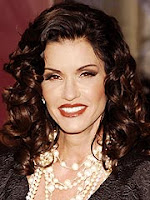 Finally, on dvd I got around to watching "Transamerica" which was first screened December 23, 2005. The dvd version includes brief conversations between the director Duncan Tucker and his lead actors, Felicity Hoffman, who plays the transgender woman, Bree, and her son, Toby, played by Kevin Zegers. There is also an optional commentary on the film by the director. I was pleasantly surprised by the film's blend of humor with melodrama, well done scenes of various locales on the road trip that Bree undertakes from East to West Coast with her son. The film begins with Bree eagerly looking forward to move ahead with a new life after surgery, but an unexpected individual from her past--her distant son's reappearance with whom she has had little contact--threatens to delay her long awaited goal. If Bree believes her own life has been derailed, so too, she realizes has that of her son. He is a runaway who lives on the streets of New York City, and who is certain only about two goals--to find his long lost father and to start his acting career.
Finally, on dvd I got around to watching "Transamerica" which was first screened December 23, 2005. The dvd version includes brief conversations between the director Duncan Tucker and his lead actors, Felicity Hoffman, who plays the transgender woman, Bree, and her son, Toby, played by Kevin Zegers. There is also an optional commentary on the film by the director. I was pleasantly surprised by the film's blend of humor with melodrama, well done scenes of various locales on the road trip that Bree undertakes from East to West Coast with her son. The film begins with Bree eagerly looking forward to move ahead with a new life after surgery, but an unexpected individual from her past--her distant son's reappearance with whom she has had little contact--threatens to delay her long awaited goal. If Bree believes her own life has been derailed, so too, she realizes has that of her son. He is a runaway who lives on the streets of New York City, and who is certain only about two goals--to find his long lost father and to start his acting career.But a conflict arises because Bree is reluctant to disclose her true identity to her Toby as his father. Exactly, why we don't know--partly, it's a sense of shame that holds her back, and partly it's a fear of taking responsibility for a young man who seeks guidance, yet rejects authority. On the way back to California at a stop at a transgender friend's house in Texas, however, we learn that Toby accepts her friend, but here Bree misses her chance. And so the film tantalizes us--when will Bree talk to her son? how will he react? Doubtlessly, some measure of secrecy is an unfortunate consequence of living with a such a stigmatized transgender identity, but at the same time in some instances, it is harmful to keep a secret.
To what extent is Bree controlled by her own fear we don't get a clear answer; if asked, she herself probably would not have an answer. This becomes the tragic fate of someone who becomes imprisoned by what is an understandable and justified fear. At times the line is very fine and difficult to discern, so often you find transgender individuals erring on the side of caution or boldness.
Bree and Toby are a study in contrasts. Bree is formal to a fault, reserved and guarded, while Toby is brash, spontaneous and outgoing--too much so. The film is as much about Bree as it is about Toby's own growth. Bree needs to confront her deepest fears from her past as a man, that is her son, who she was estranged from; Toby, to stop acting out in anger against the world and himself after having been abused.
The film's flaws were minor. Some scenes were needlessly overdramatized, like Toby's confrontation with his stepfather, and some of the dialog trite, like Toby's crude trashing of the Lord of the Rings.



